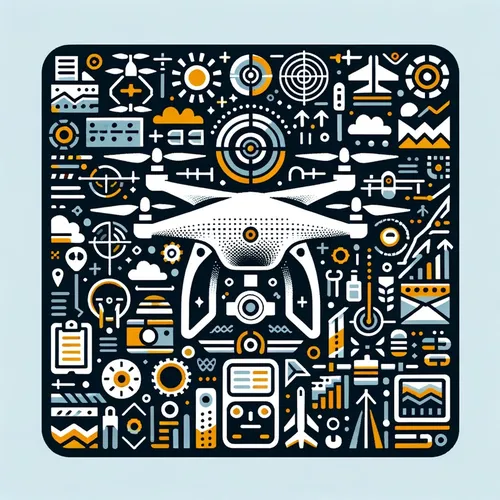Drone Pilots Dish: AI, Slick Moves, and Sky-High Success Secrets Revealed!
- Author
- Quiet. Please
- Published
- Sun 07 Sep 2025
- Episode Link
- https://www.spreaker.com/episode/drone-pilots-dish-ai-slick-moves-and-sky-high-success-secrets-revealed--67660940
This is you Professional Drone Pilot: Flight Tips & Industry Updates podcast.
The world of professional drone piloting is evolving rapidly, and for commercial pilots, aerial photographers, and inspection specialists, staying ahead means continuously refining both flying skills and business acumen. As demand grows in sectors like real estate, infrastructure inspection, and high-rise cleaning, mastery in advanced flight techniques is a must. Practicing precise control in challenging weather, executing smooth automated waypoint missions, and leveraging beyond visual line of sight operations, where permitted, are now core skills. AI-driven navigation and adaptive flight sensors are supporting safer and more efficient operations, as seen in the cleaning sector where window-washing drones are revolutionizing building maintenance according to Lucid Bots.
Equipment maintenance has become more predictive and data-driven, thanks to the integration of artificial intelligence and machine learning. Companies are increasingly using sensor data to diagnose wear, minimize downtime, and extend equipment lifespan, with the drone maintenance service market forecast to grow at over 5 percent annually through 2033 according to recent overview reports. Regular firmware updates, battery health checks, and rotor balance tests should be on every pilot’s weekly checklist. On the business side, drone-as-a-service models are expanding, bundling flight, analytics, and maintenance, making service offerings more appealing. For pricing, think beyond flight hours—consider the value your analytics or inspection services deliver to clients, and structure your rates to reflect specialized expertise.
Certification requirements are also tightening. In the U.S., the FAA now requires pilots to complete online recurrent training every two years to maintain a Part 107 certificate, ensuring that all operators remain current on regulatory changes and operational best practices. Similarly, pilots in other countries must regularly recertify and, in many markets, drones must be registered and broadcast remote identification information to stay compliant. On the client side, professionalism in communication and transparent pricing are distinguishing top operators from the rest. Offering pre-flight weather briefings and risk assessments provides tangible value, especially as increasingly unpredictable weather—driven by global climate trends—can ground even the most experienced pilot. Carrying robust liability insurance is now indispensable, both to satisfy client demands and to protect your business as claims and expectations rise.
Recent news includes the rapid adoption of drone-based cleaning services for high-rise buildings, the rollout of new predictive maintenance tools powered by artificial intelligence, and the FAA’s push for stricter compliance and expanded recurrent training to support safe commercial growth. Looking ahead, the implications are clear: as automation expands, drone pilots who complement technical skill with proactive business practices and industry-current certification will be best positioned for future success.
A few practical takeaways for listeners: sharpen advanced flight maneuvers with regular simulator use, update your maintenance logs weekly, price your projects based on outcomes, and closely follow certification deadlines. The drone landscape is dynamic, offering tremendous opportunity for those committed to ongoing learning. Thanks for tuning in today, and be sure to come back next week for more on industry trends and practical advice. This has been a Quiet Please production, and for more on me, check out Quiet Please Dot A I.
For more http://www.quietplease.ai
Get the best deals https://amzn.to/3ODvOta
